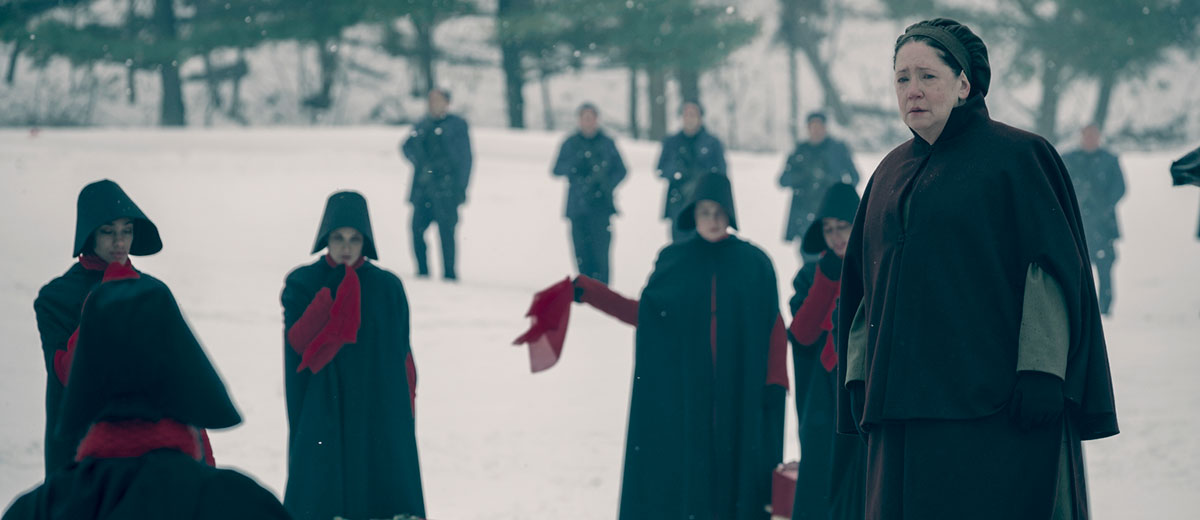I wanted to ask about Samira’s moment in this episode. She has a gut wrenching sort of reaction when her character discovers that her lover has been killed. Can you talk about shooting that scene? Was there time for rehearsal?
No. What I did, was I held back the picture [she finds]. We did a picture of the dead lover, which was the actress, of course. And I held back showing her that. The most important thing is you know you have to be sure that the set is ready for her too. It’s what I call a “fake set.” It’s respectful of the demands being made on the performer to get inside a very difficult and dark place. And so they have to have full-on concentration. And they not only have that full-on concentration for one take, but for probably many takes and as you have to move the camera around. So I make sure that the crew is ready to move fast, be nimble and allow this 45 minutes or an hour of work on her side to be captured so that she’s not having to strain for it. So she can stay in the moment and give it her all without losing focus. As part of that, I set up the close-ups first, so that we could capture the first moment that she saw the picture. We buried the picture in the book and as she was going through the pages [she’d find it]. The first shot we shot the entire sequence was her finding that book. And that made a big difference for her because it was all very, very fresh. That’s the way I approach any very difficult scene, is that we all figure out how best to do all the different angles we need very quickly, efficiently and very quietly. So it seems like [the crew] is not in the room.

“After” is sort of rare for “The Handmaid’s Tale” in that there are two specific optimistic moments at the end of the episode. One, where Offred discovers that her friends who had been sent to the colonies have returned. They then tell each other their real names in the market. And then there’s the final scene where Mrs. Waterford basically brings Offred in and needs her help. In regards to the market scene am I making a presumption that you made the room get brighter at the end because it was sort of a positive moment? Or is that just happenstance?
No. I think it was a combination of turning the camera. There was one wall of windows, and so we started looking into the dark wood of the market. And then, yes, we came around. And we also got a little artier with it, so it disembodied as the whisper rolled around the room. It wasn’t only just more light. It also, we open sound in nine. We kind of went into the moment as a slightly synthesized dreamscape alongside the reality of it. So, yes, it was intended to have some magic.
I’m sure Bruce has told you secrets of the world of Gilead. With the season over, we now have a map of what used to be the continental United States. It was not in your episodes but have you see this map, do you know how to read it and, most importantly, what it means?
I’m going to be honest with you. I have seen it but I can’t tell you any more than that.
O.K. So that’s sort of a non-yes “yes,” [Laughs.] The second question is, I’m assuming you’re coming back for season three, and if you are, has Bruce told you anything about where the season is going?
Well, yes, of course, I’ve been invited back. And I’m not sure which episodes yet. I think it’s the early days because of availability. Even if Bruce had told me, you would have to make me walk over hot coals. And even then I probably wouldn’t tell you, but I honestly have no idea. I will be just as excited to read the scripts as last year, frankly.
Oh, fantastic. And just really quick, what are you shooting right now?
I’m shooting something called “Not Broken” It’s NOS4A2, like the license plate. It’s an adaptation of the book. It’s a show for AMC. I’m doing a pilot block for AMC.
“The Handmaid’s Tale” season two is available on Hulu.





